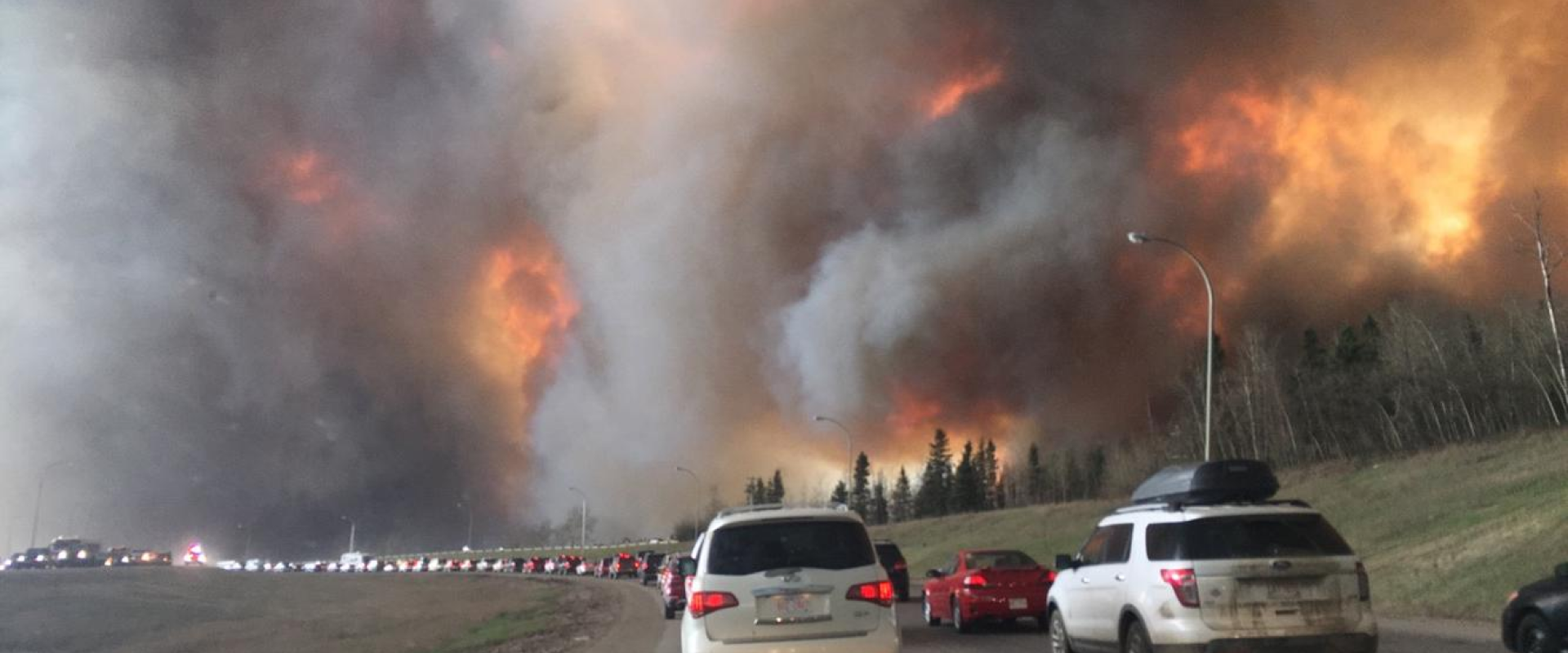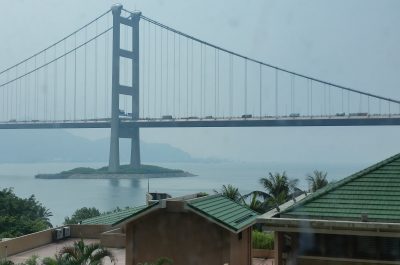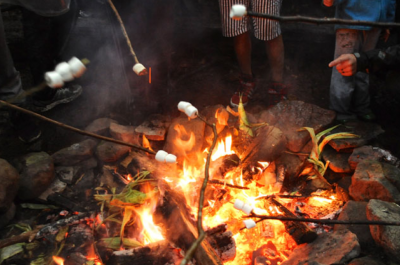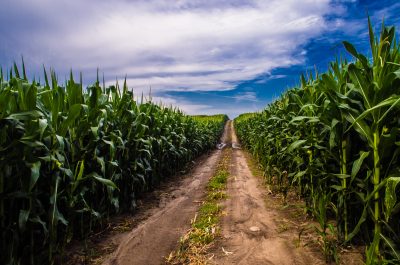In the fall of 2015, the Valley Fire tore through Lake County in Northern California. Gina Waldon watched from her home in Middletown as the fire raged through the canyons and forests nearby. By the time the fire was contained, Waldon’s home had burned down and her husband’s business was lost.
“We barely got out with the clothes on our back and the animals,” she said.
Five years later, fires are burning again across the West. But this time, Waldon is living far from the flames, in a home in Wyoming that feels like a sanctuary. Her displacement is one of more than one million that have occurred on average in recent years in the U.S. as a result of disaster. That figure is likely to grow as climate change increases the severity of wildfires, hurricanes, and coastal flooding.
In September 2020, tens of thousands of people in Oregon were ordered to evacuate from encroaching wildfires.* When the smoke clears, some may choose not to return.
Although it’s difficult to predict the number of people who may be displaced by disasters like hurricanes and wildfires in the future, six feet of sea level rise alone could force 13.1 million Americans to move by 2100.
After the Valley Fire, an estimated 3,000 people were rendered homeless. In the aftermath, Waldon and her husband lived for a time in a trailer with their four cats and three dogs. “It was a nightmare,” she recalled.
— Viv Byrd
A steady drip of climate migrants
After surviving a disaster, some, like Waldon, choose to relocate.
In the U.S., it is hard to track the scale of this movement, which is often called retreat or climate migration among researchers and climate adaptation practitioners.
“Most climate displacement that is happening in the U.S. and U.S. territories today is ad hoc and is a household decision often of whether to stay or whether to go immediately following a sudden-onset disaster,” said Victoria Herrmann, the president and managing director of the Arctic Institute and an expert on climate adaptation and migration.
According to the Internal Displacement Monitoring Centre, there have been an average of 1.2 million disaster-related displacements annually since 2016 in the U.S. But the number of displacements is not equal to the exact number of people who have been displaced, as some individuals may be displaced multiple times within a year. Little data exists on how many displaced people return home versus move to new locations.
Almeda fire approaching Phoenix, OR and Medford causing evacuation south of Barnett Rd in Medford
Despite the data gaps, evidence suggests that many people displaced by disasters move within the same region. Many who left New Orleans after Hurricane Katrina found refuge in Houston, for example.
“Migration is a decision that includes not just climate,” Herrmann said. “It’s a combination of a push factor away from a place that a household once called home but has seen, probably, multiple disasters, and a pull of where they can find work that fits their skillset and often where they already have family, or where they have some type of social connection.”
Managed retreat may not be well-managed
Although the majority of climate migration in the United States is occurring at the individual household level, some retreat is happening in a more official capacity. This type of movement is known as managed —or planned— retreat.
Most of the managed retreat in the U.S. takes the form of buyouts in which the government buys homes in an at-risk area. This strategy prevents houses from being sold and putting new buyers in harm’s way. Buyouts were common in the aftermath of Hurricane Sandy and are also deployed in parts of the country that experience repeat river flooding.
But A.R. Siders, an assistant professor who researches climate adaptation policies at the University of Delaware, said there’s little research confirming that buyouts actually help people. One problem is that there is little data about where people move once they retreat, so it’s unknown whether they’re moving to safer locations. Houston, Siders said, has one of the biggest buyout projects in the country. But at the same time, new developments are being constructed within the floodplain.
“We need to think about managed retreat as one piece of a much larger response picture, like if you’re going to demolish 800 houses, where are you going to build 800 houses?” she said. “You can’t just say, ‘Don’t live here,’ unless you have some idea of where they should live.”
— Lily Bui
The conversation around retreat also prompts many equity concerns. For example, if a government chooses not to do buyouts, one result can be that only wealthy people are able to find safe housing. That in turn can lead to gentrification that puts already marginalized communities at greater risk. At the same time, Siders said concerns — though no official data — exist that buyout offers may be accepted more often in lower-income communities of color.
“Is that a bad thing or a good thing? Honestly, we don’t know,” she said. “That could be this inequitable situation where we’re targeting these communities for relocation, like people are trying to remove them … or it could be we’re recognizing that the most at-risk communities in the U.S. are communities of color, and then we should be targeting them in order to help them.”
In addition to buyouts, a handful of communities are in the process of retreating together, as a group, through relocation. Herrmann said that at present, a dozen communities are planning on a full-scale relocation. That group is mostly made up of Alaska Native villages facing coastal erosion, tribal communities in coastal Louisiana threatened by sea level rise, and tribal communities in Washington that are also dealing with sea-level rise.
Following its destruction in the Camp Fire of 2018, residents of the Northern California town of Paradise debated whether to rebuild or relocate. Ultimately, they decided to stay.
Planning for the future
Herrmann called the question of whether to retreat an impossible one. Siders called it heartbreaking. Both encouraged communities and individuals to think of retreat as one tool among many of how they may manage the risks that climate change poses to their area.
Siders recommended beginning conversations about retreat by asking what the community wants to look like in 30 years. This question creates time and space to explore options and invest in a future with improved quality of life, rather than starting the conversation on a foundation of fear and urgency.
Regardless, the conversation around retreat — whether as a household or as a larger community — is likely to be painful. But Siders said it’s one that is important to begin well in advance.
“You can’t have these conversations right after a disaster when everyone is emotionally overwrought,” she said. “It’s a window when people are willing to make change, but when you want real buy-in, you want to use that window to make changes that people have already agreed to.”
Reflecting on her own experience of fleeing California, Waldon offered similar advice: “Have an escape plan,” she said.
At her new home in Wyoming, Waldon is hundreds of miles removed from the fires now burning across California, Oregon, and Washington state. But she has not entirely escaped the drought gripping the West. On her land near Buffalo, the grass crunches under her feet. And her view of the Bighorn Mountains is obscured by thick wildfire smoke.
Post about your experiences with extreme weather on ISeeChange
Have you been dealing with fires or hurricanes this year? Have you ever considered moving somewhere else? If so, where do you think you might go?
*Editor’s note: This sentence was updated after a news report and an Oregon state official provided a revised estimate of the number of state residents who evacuated from fires.
Story by Samantha Harrington for ISeeChange in Partnership with Yale Climate Connections.
Cover photo by DarrenRD on Wikimedia Commons.




